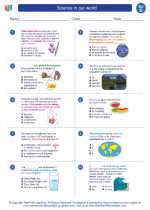Cations
In chemistry, a cation is a positively charged ion. It is formed when an atom loses one or more electrons. Cations are typically formed from metals, as metals tend to lose electrons and form positive ions. The loss of electrons leaves the cation with a net positive charge, as it now has more protons than electrons.
Formation of Cations
Cations are formed through the process of ionization, where an atom loses one or more electrons. This can occur through various chemical reactions, such as oxidation or dissolution in water. When a metal atom loses electrons, it forms a cation with a positive charge. For example, sodium (Na) can form a cation by losing one electron, resulting in a sodium ion with a 1+ charge (Na+).
Naming Cations
Cations are named by simply adding the word "ion" to the name of the element. For example, the cation formed by the element magnesium is called the magnesium ion. The charge of the cation is indicated using a Roman numeral in parentheses after the element name. For example, the cation formed by iron with a 3+ charge is called the iron(III) ion.
Properties of Cations
Cations play a crucial role in various chemical reactions and processes. They are attracted to the negative charge of anions, and this attraction forms ionic bonds in compounds. Cations also contribute to the conductivity of solutions and the behavior of electrolytes in solution. They are essential in many biological processes and are involved in the function of nerves and muscles.
Study Guide
- What is a cation?
- How are cations formed?
- Give an example of a cation and its formation.
- How are cations named?
- What role do cations play in chemical reactions and biological processes?
Understanding cations is important in understanding the behavior of elements and compounds in chemistry. It is essential to grasp the concept of cations and their role in forming ionic compounds and contributing to various chemical and biological processes.
[Cations] Related Worksheets and Study Guides:
.◂Science Worksheets and Study Guides Fourth Grade. Science in our world

 Worksheet/Answer key
Worksheet/Answer key
 Worksheet/Answer key
Worksheet/Answer key
 Worksheet/Answer key
Worksheet/Answer key
 Vocabulary/Answer key
Vocabulary/Answer key
